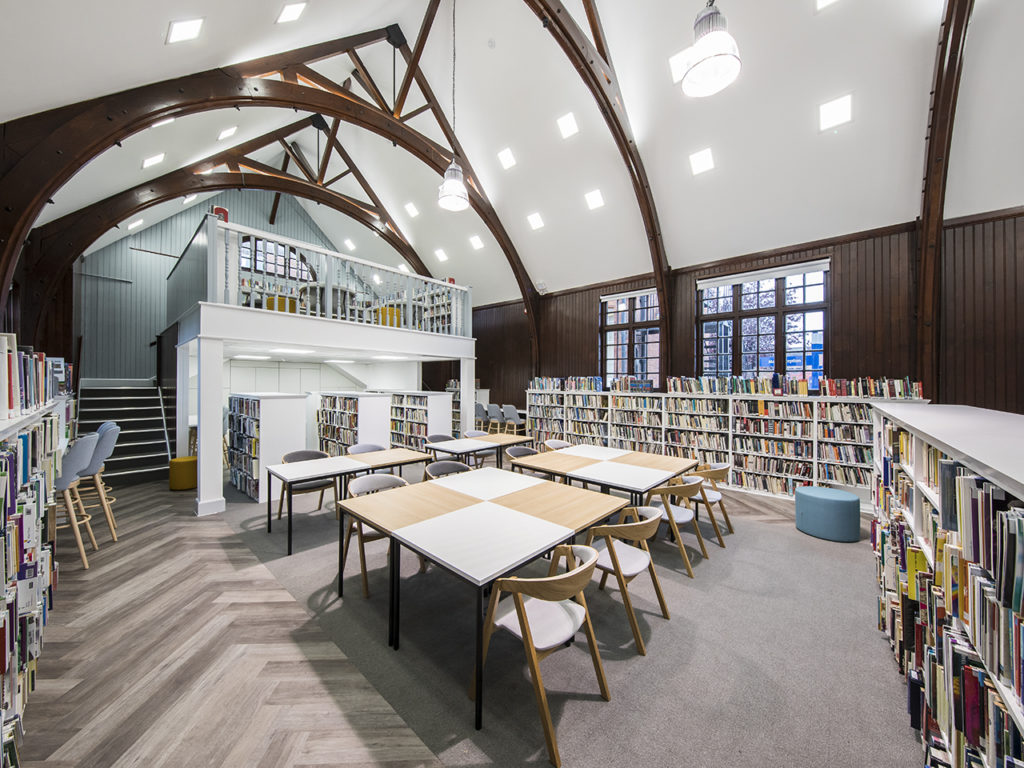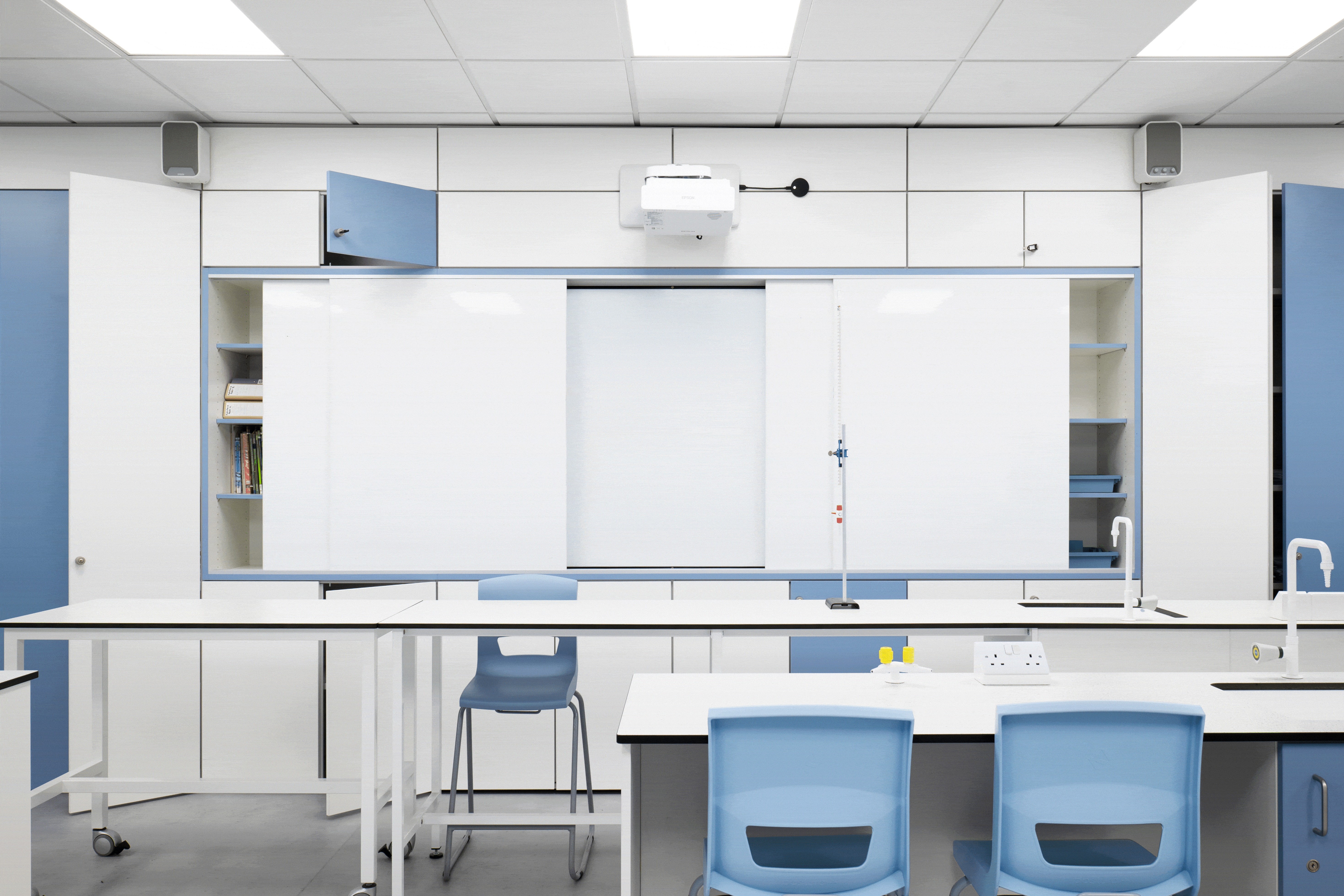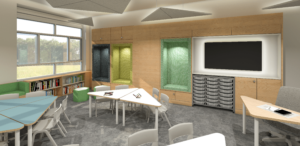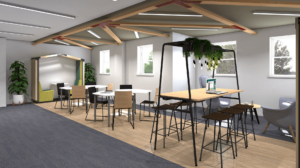The end of the year is fast approaching and here at Envoplan we are always looking to the future. We recognise the importance of staying firmly abreast of incoming and outgoing trends, in both design and education sectors alike. With this in mind, we take a look at what we think is set to dominate trends in school interiors in 2019. Our predictions forecast a return to natural materials, an abundance of earthy tones, as well as a glancing nod towards industrial design. We explore the increasing prominence placed on school branding and discover why small spaces are rapidly becoming big news.
Back to Basics
Nature is set to take centre stage in 2019, with simple colours and natural palettes delicately splashing streaks of colour across rejuvenated educational spaces. A paired back colour scheme that oozes calm and serenity will replace the garish primary colours of the past. Neutral colours and natural materials will give classroom areas a sense of the outdoors, indoors. Free flowing spaces allowing children to seamlessly transition between the fresh air and the classroom setting will become the standard.
Look for an ever increasing use of natural wood to replace rightly unfashionable plastics for everything from wall decorations, right down to the learning resources that the children use in class.
Coupled with this will be a continuing move towards sustainable and Eco-friendly designs. The use of ecological and natural fabrics for construction, and the rising trend for using elegantly natural materials such as hessian for decoration, will feature in schools looking to further enhance their green credentials. Through circumstance, situation and choice, schools will be making an Eco-conscious decision as they plan future refurbishments.
Who does it well: The Green School Bali
Designers: John and Cynthia Hardy, Jorg Stamm and Aldo Landwehr.
The Green School, Bali are a world leader in natural construction, but their design goes beyond the cosmetic.
‘Our campus is the physical manifestation of what we stand forin essence; active learning, taking action, sustainability, passion and integration.’
The school boosts its Eco-credentials by featuring solar panels, a mini hydro vortex, a compost station, a water filtration system, a complex waste management centre, an aquaponics centre and a bio bus.
Perhaps the most inspiring and radically thinking feature of Bali’s world famous Green School is that it is a school without walls. Both literally and figuratively. Their ethos and environmentally driven curriculum set out to inspire the next generation of change-makers, and their beautiful natural environment serves as the perfect setting to do just that.
Colour and Branding
According to data from Google, the number of people searching for the specific phrase: ‘the importance of branding and why is branding important’ is up 80% in the last 12 months. And in a world where the most mundane of household items is branded within an inch of its life, it’s no wonder that schools are focusing carefully on establishing and developing their all-important ‘brand’. It starts from the ground up. A distinctive logo or colour scheme that captures the right balance between eye-catching and alluring. A slick modern website that draws in prospective parents yet still projects the years of well-earned history and heritage. A coffee-table-friendly school prospectus, full of glossy showcase photographs. For those going the distance, it is important that any branding is subtly nodded towards in the interior décor and design. Schools can increasingly afford to be more adventurous with colour and should be unafraid to seek inspiration from trends in the commercial or domestic world, embracing bold design with their own unique take and carving out a niche brand in a highly competitive market.
Good school branding will broadcast a school’s ethos. Whether aiming for an innovative, traditional or progressive approach to the education of its pupils, a successful brand should tell a story.
Multifunctional Furniture
The transient nature of a school’s population means that their landscape can resemble shifting sands, blowing and briefly settling before changing once more with the fluctuating winds. Dining halls can be required to quickly serve as informal concert spaces; the sports hall may take the spotlight as the latest location for the drama production at a moment’s notice. This ever evolving environment is part of what makes schools exciting, and the key to unlocking a school’s full potential is to embrace multifunctionality and allow for endless configurations without causing any disruption or disturbance. Through clever planning and even cleverer items of furniture, intelligent design will make every inch of your school’s space work harder and smarter. Bespoke furniture can not only make the most of each cubic metre but also be tailored to your exact requirements. And it’s not just big spaces that benefit from multifunctional furniture. Where space is at a premium, the ability to transform and adapt in an instant can prove invaluable.Who does it well: Rosemary Works School
Designer: Aberrant
Industrial Design The hype around STEM (Science, Technology, Engineering & Maths) is here to stay. Which means that schools are investing heavily to ensure that pupils haveaccess to dedicated spaces that allow the opportunity to flourish in the STEM subjects. But unlike the food tech or science labs of the seventies, these spaces are bouncing back with a cool modern edge, ready to motivate the future scientists and engineers of tomorrow.
These ‘makerspaces’ need to include flexible learning configurations, conferencing areas and quiet spaces for reflection. And don’t think that a few token Bunsen burners and Pyrex mixing bowls are going to deliver the required inspiration. Successfully embracing this type of design requires a major cultural shift within the school as ample resources are funnelled into instilling STEM subjects at the core of their educational ethos. Kitchens should be inspiring creative environments allowing for culinary creativity. Laboratories should be stimulating settings urging young developing minds to constantly demand answers and explanations. Just setting foot in these industrially designed surroundings should be enough to set the cogs whirring and creativity flowing.
Who does it well: Alexander McLeod food technology classroom
Designer: Envoplan
Transitional Spaces
Rather than being places you simply pass straight through, transitional spaces are fast becoming the show pieces of school design. As parents and pupils traverse corridors and reception areas, they should get a sense of style, without compromising practicality. Schools should take their cue from commercial interiors and try to emulate a wider trend influence. The key to breaking out fromthe crowd is having the courage to be innovative in the use of design. Don’t be afraid to paint ceilings or introduce splashes of colour in key areas. On average, 25% of school space is taken up by corridors, and all that untapped space has big design potential. Consider bringing communal spaces into these transitional zones, it showcases and engenders a sense of community amongst both pupils and prospective parents.
Who does it well: L’École Polyvalente Claude Bernard
Designer: Brenac and GonzalezSpeak to Envoplan for assistance with your school facilities master planning. Our team can assist you with all aspects of the school facilities master planning, from school immersion visits (to gain a detailed understanding of your school facilities) to funding strategy assistance (including bid submission and funding sourcing support) and all other aspects of master planning.



